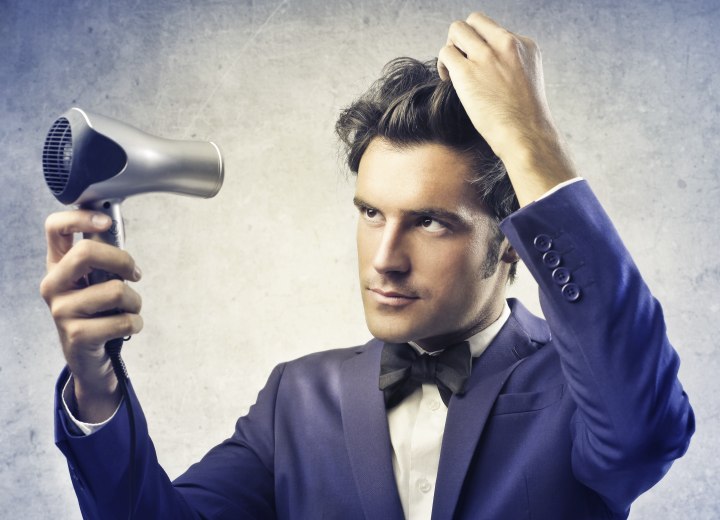A Look at Men's Hair Care

The field of men's hair care has been, until recent years, a very small portion of the hair care and beauty industry. There were a few products on the market specifically designed for use by men in their grooming, and half of these had been around for decades: Brylcreem (styling cream), Grecian Formula (hair color), Just For Men (hair color), The Dry Look (hair spray). This lack of variety in men's hair care products wasn't considered a problem, because the general attitude was that real men didn't "make a fuss" over their hair.
Shaving was time-consuming and often hazardous, resulting in nicks and cuts that had to be staunched. The general thought for most men seemed to be "if I'm going to have to get up every day and shave off my facial hair, I'm going to make styling my hair as easy as possible."
Before 1960, the vast majority of men had cookie-cutter hairstyles. The professional who cut, styled, and otherwise groomed men was also a man, known as a barber. Men's hairstyles all consisted of short back and sides with a little variation in the hair on top, depending on preference or necessity (in the case of balding men).
The trip to the barbershop every other Saturday was quick - buzz, buzz, buzz, snip, snip, snip, and voilà! Fifteen minutes and you're done and on your way out the door. Most of the time you spend twice as long waiting to get into the barber's chair as you actually spend sitting there.
But the late 1960s brought a cultural revolution, and men's hair became a symbol of one's social attitudes. Young men who disagreed with the "establishment" or were protesting the draft and a government that was sending thousands of young men overseas to die in combat began to let their hair grow longer.
The idea was that by wearing your hair longer, you showed freedom of thought and individuality, and stood in opposition to the conformity of societal norms and military indoctrination. This idea was adopted and spread by the celebrities of the period, making it more popular among their young fans.

Men also found the need for styling appliances, e.g. blow dryers and flat irons, which allowed them to achieve the popular looks of the day. There was some "stigma" attached to using these tools and products: the idea that all the grooming and time spent on hair styling was somehow "girly". Yet, most men did it, and simply denied it if it was brought up.
Fast-forward a couple of decades, and we see the cyclical nature of cultural changes. Longer styles in men's hair reached a peak in the late 1980s and began to grow shorter again. The trend changed direction again after a few years and began to alternate - every few years longer, and then shorter. The "big picture" result is that the length of a man's hair became acceptable at whatever point he chose to wear it.
Even with the growing acceptance of the variety of men's styles and hair lengths, there was still the attitude that "making a fuss" over grooming one's hair was a less than manly trait. It was perhaps not as vilified as in previous decades, but it was still met with resistance by many people.
Continue reading ...